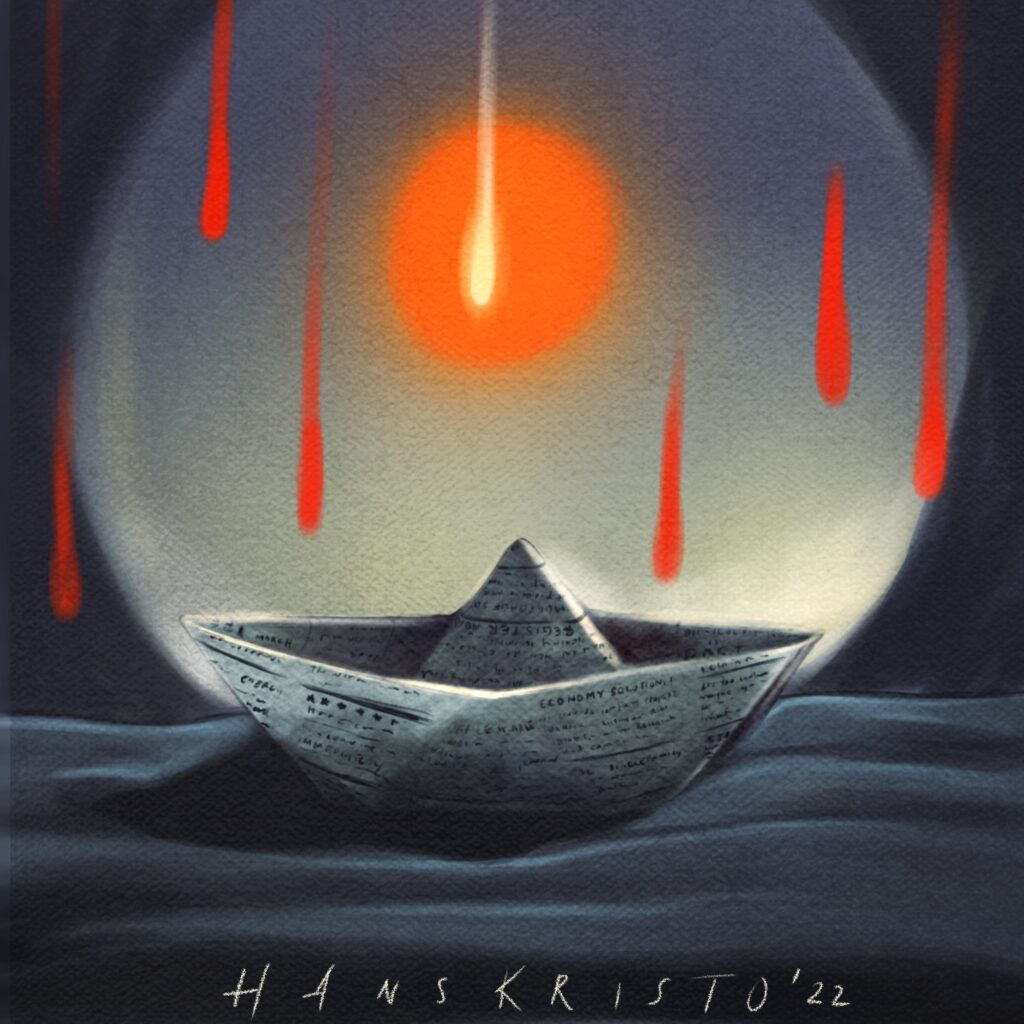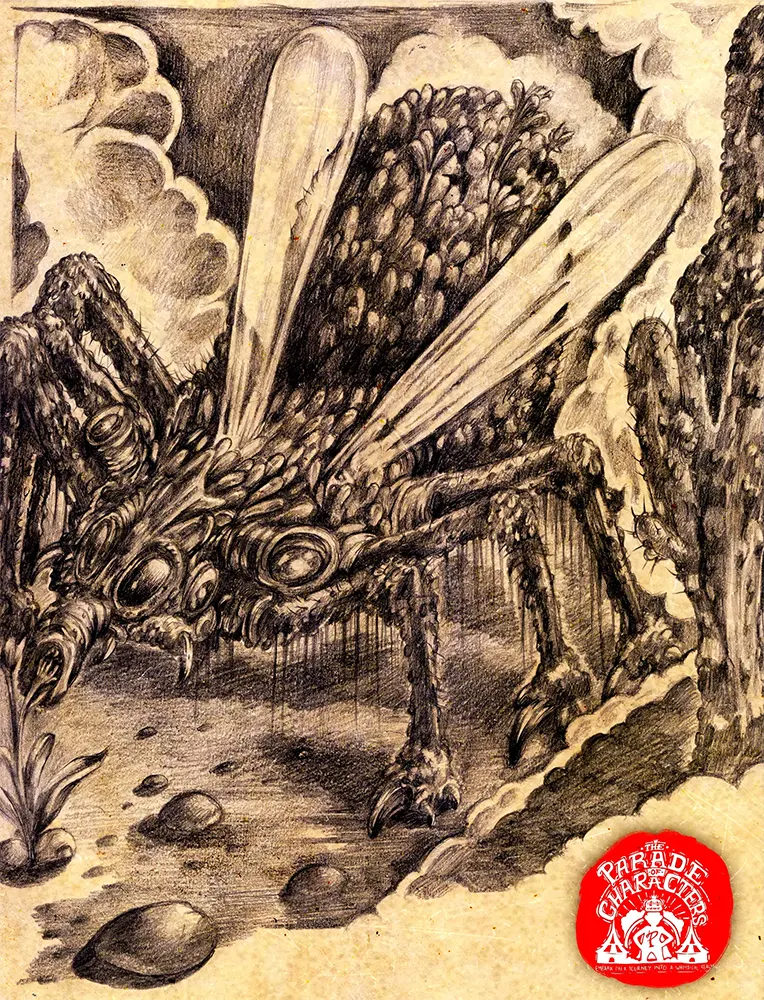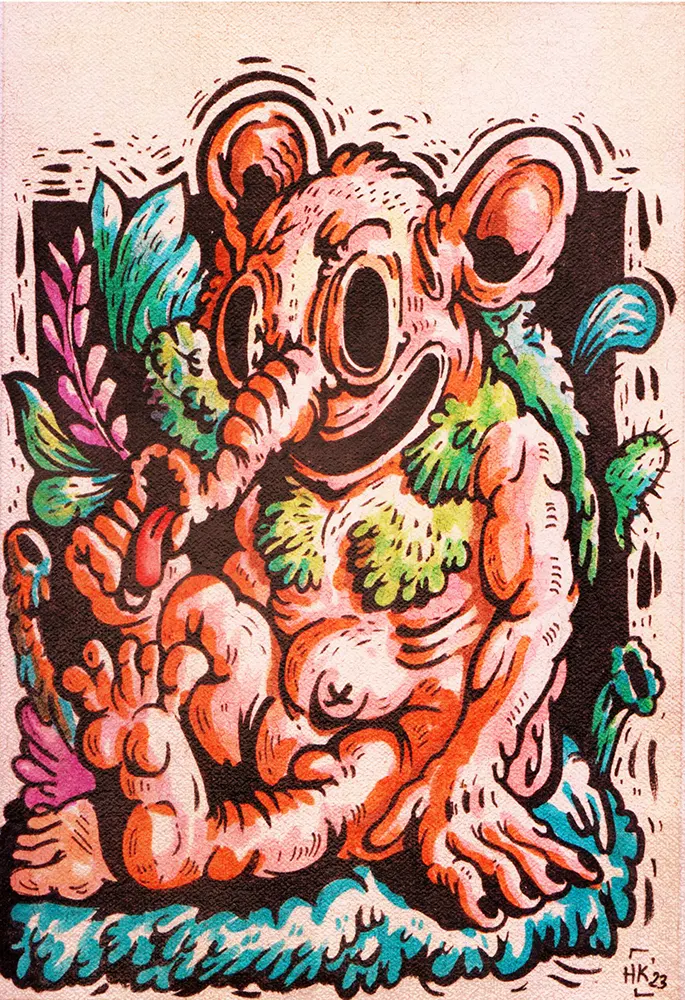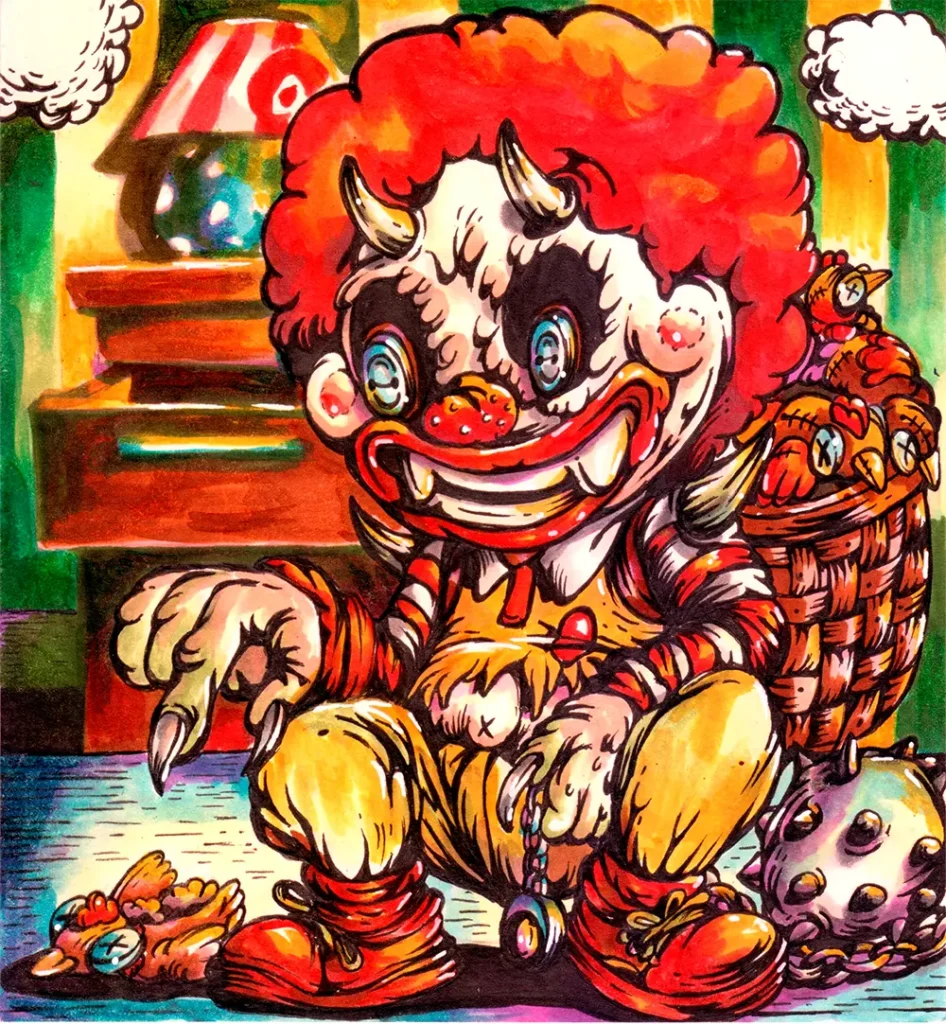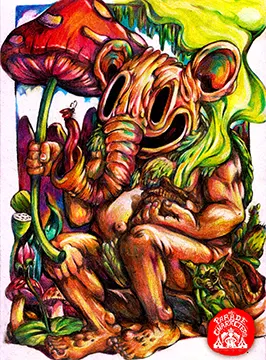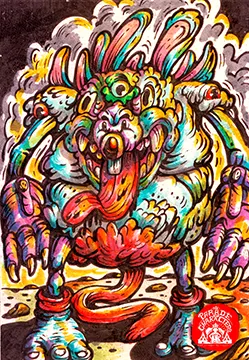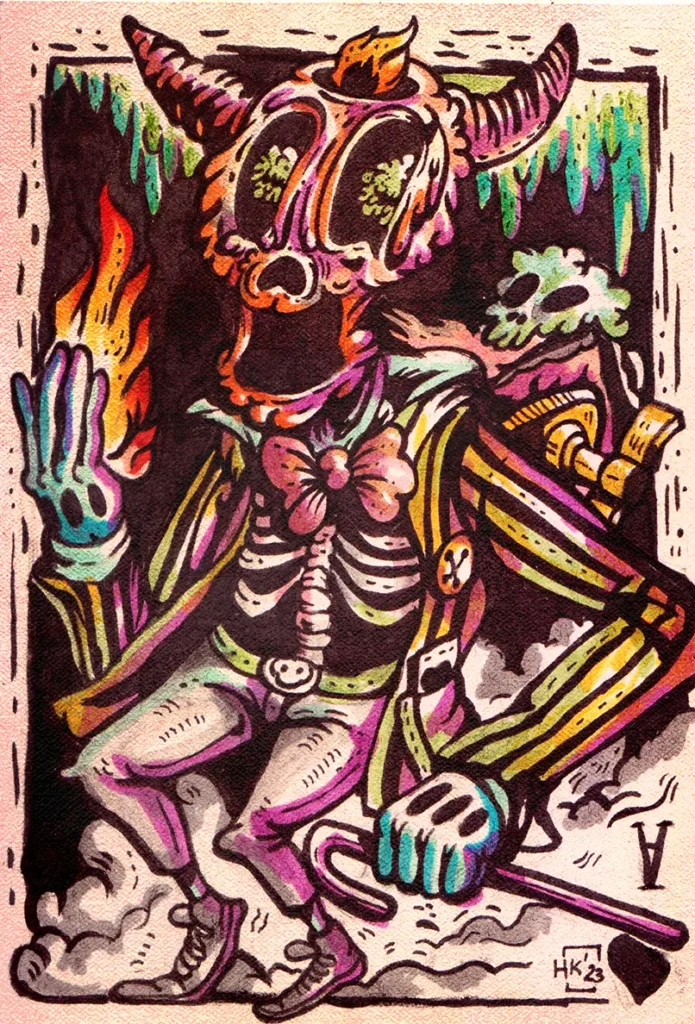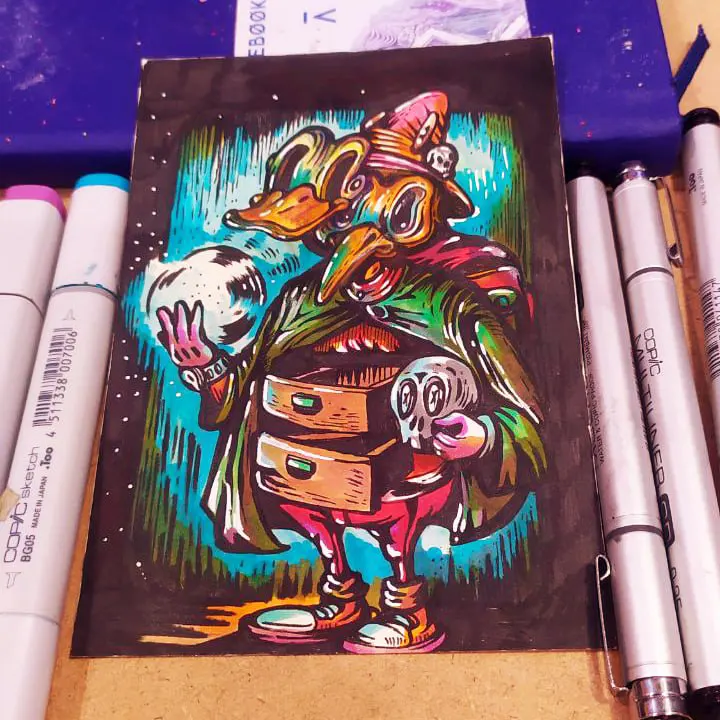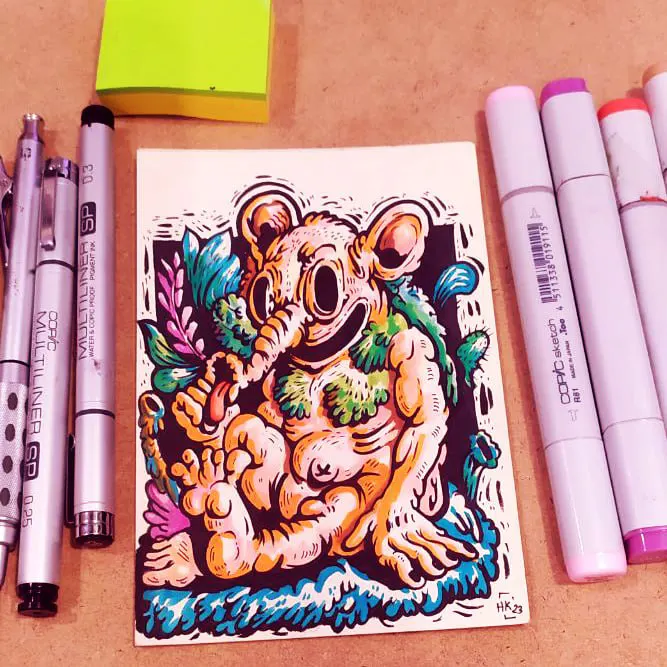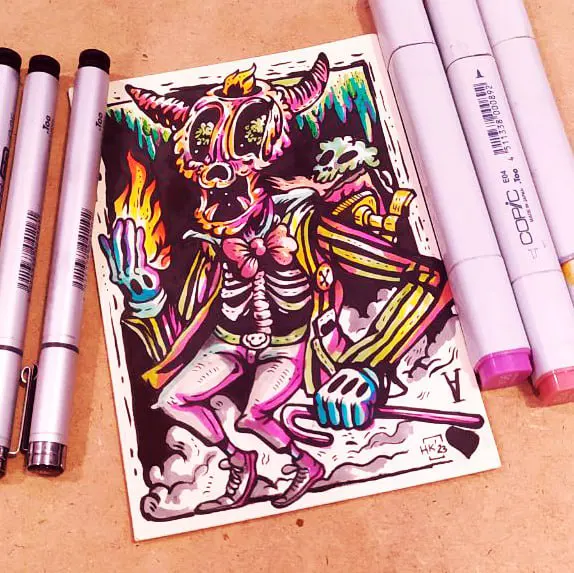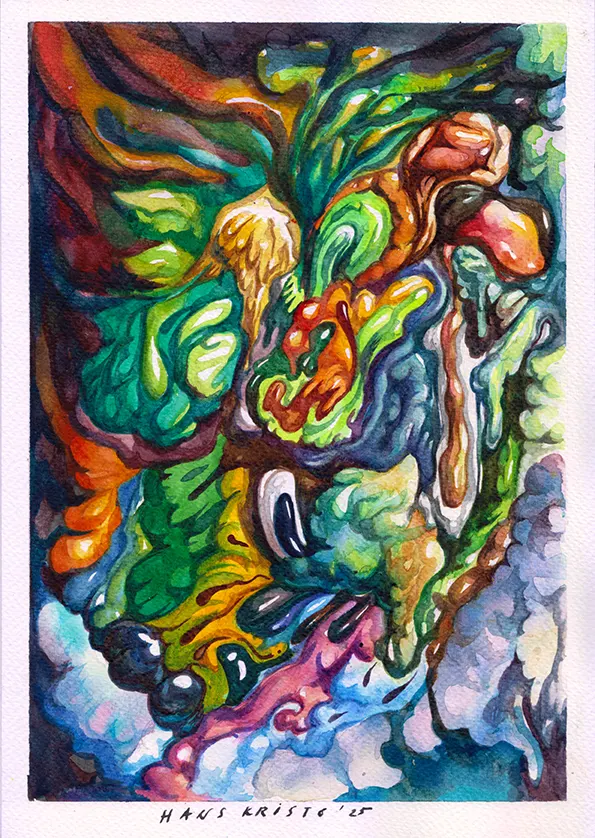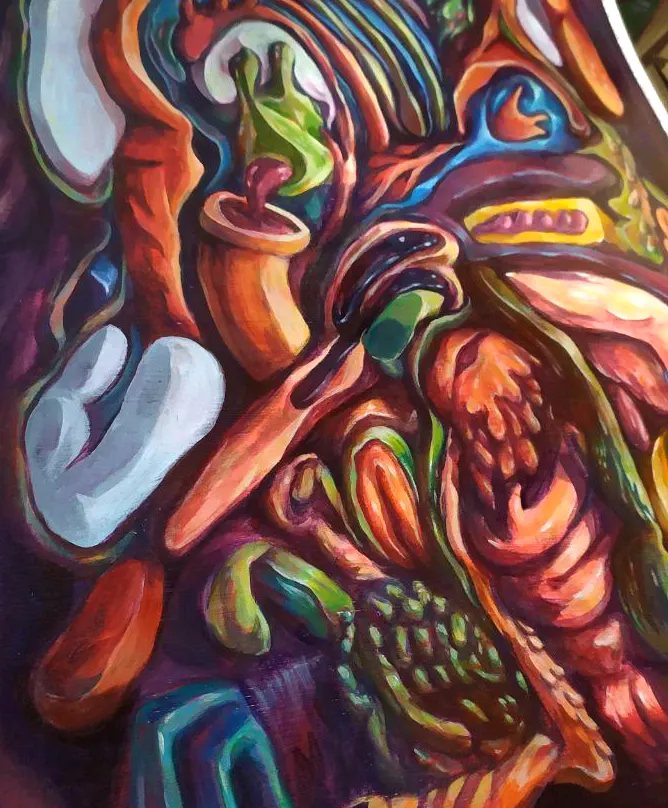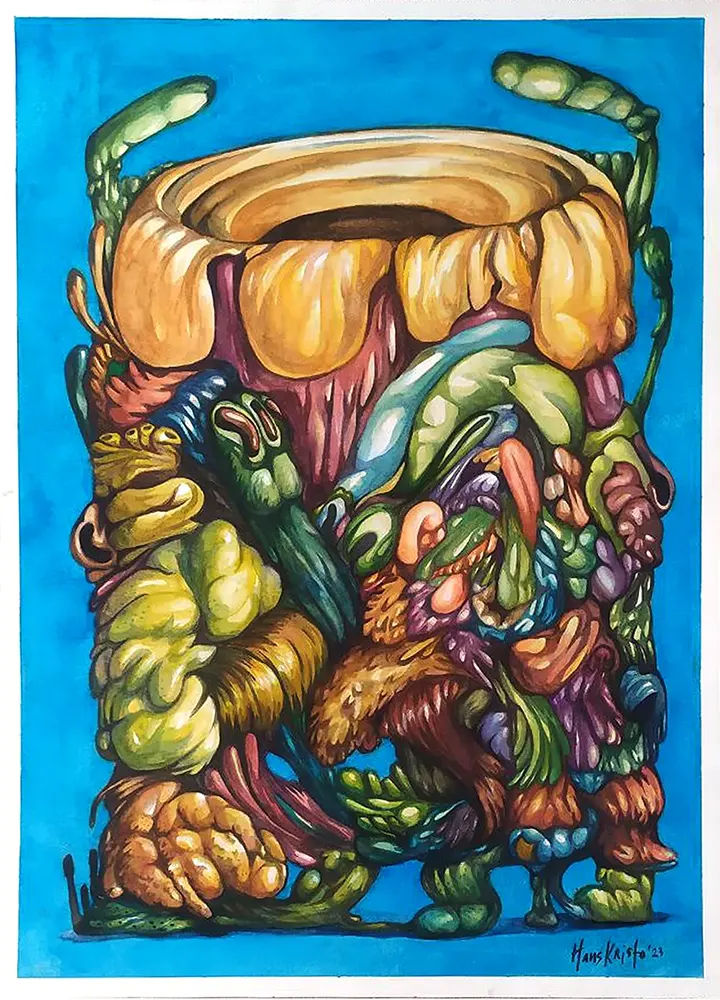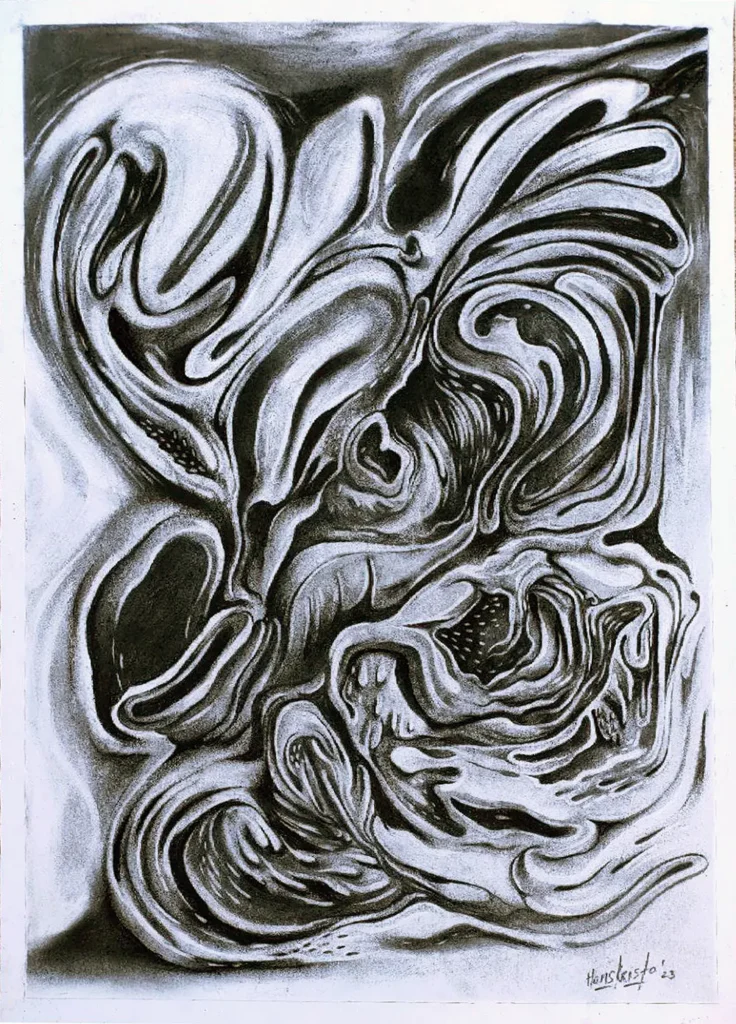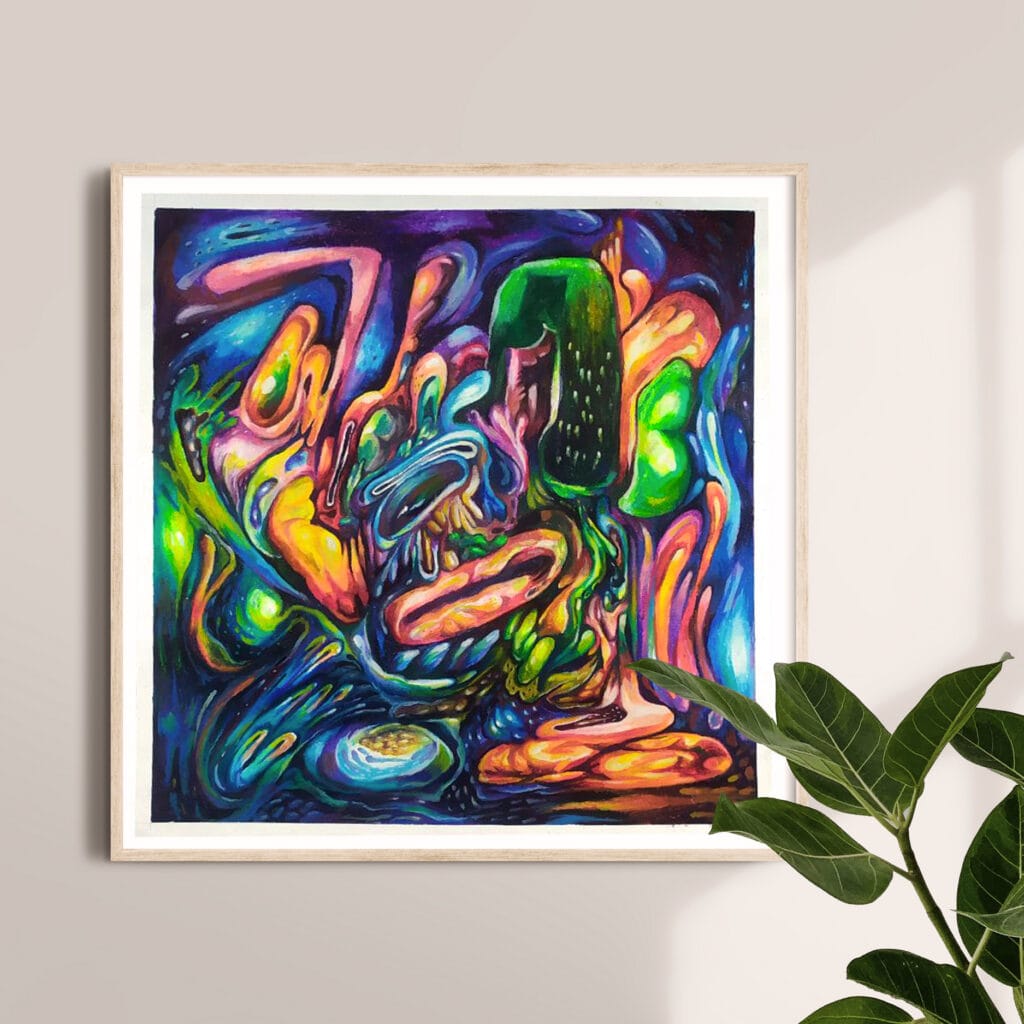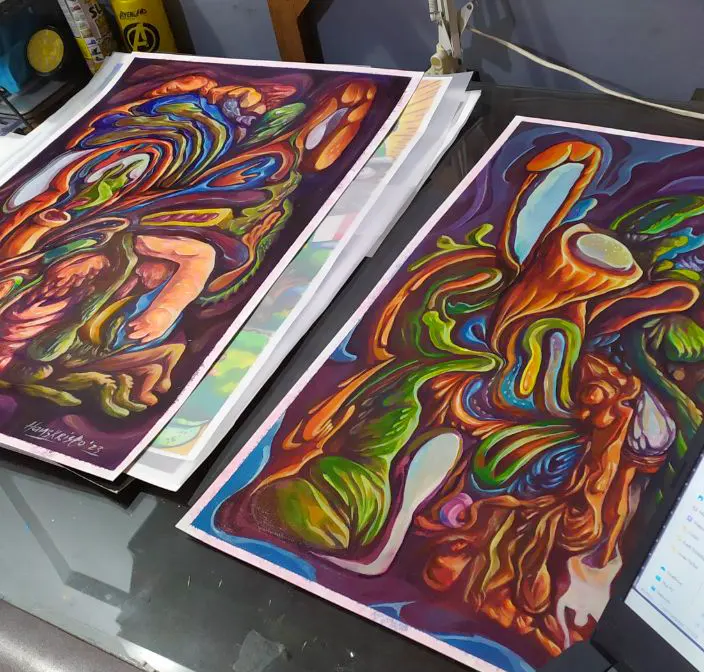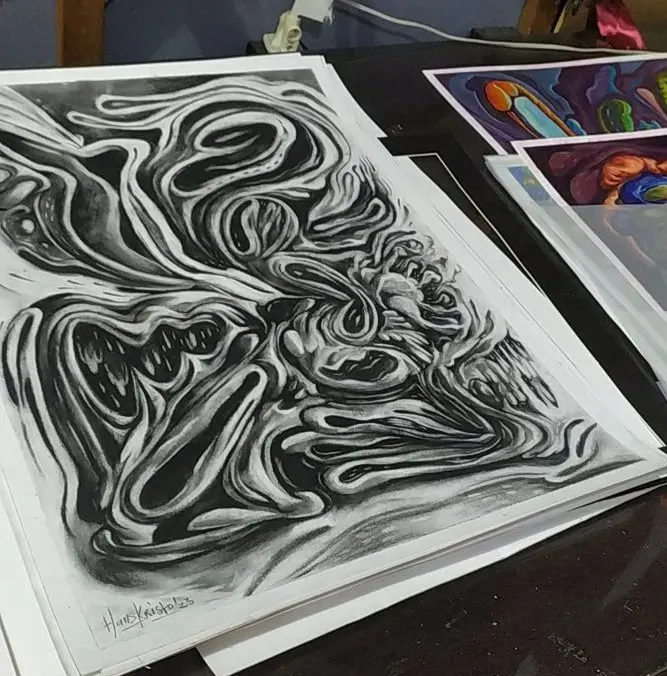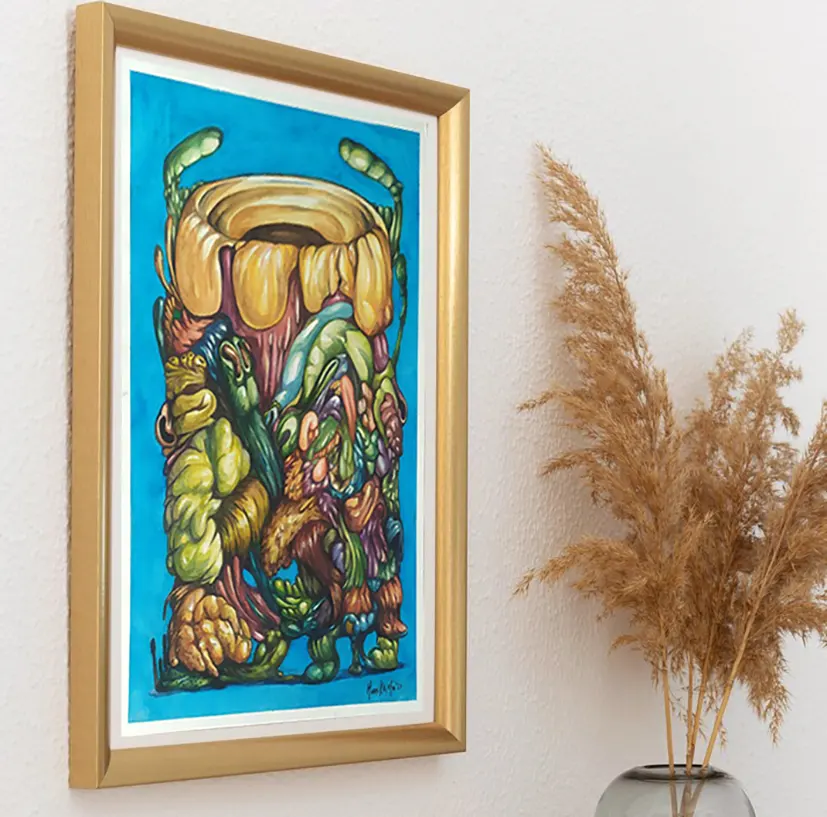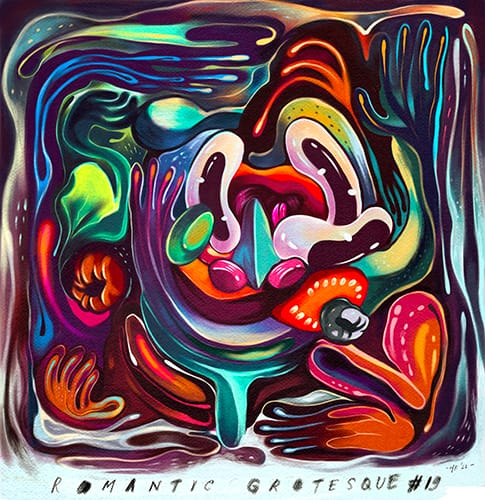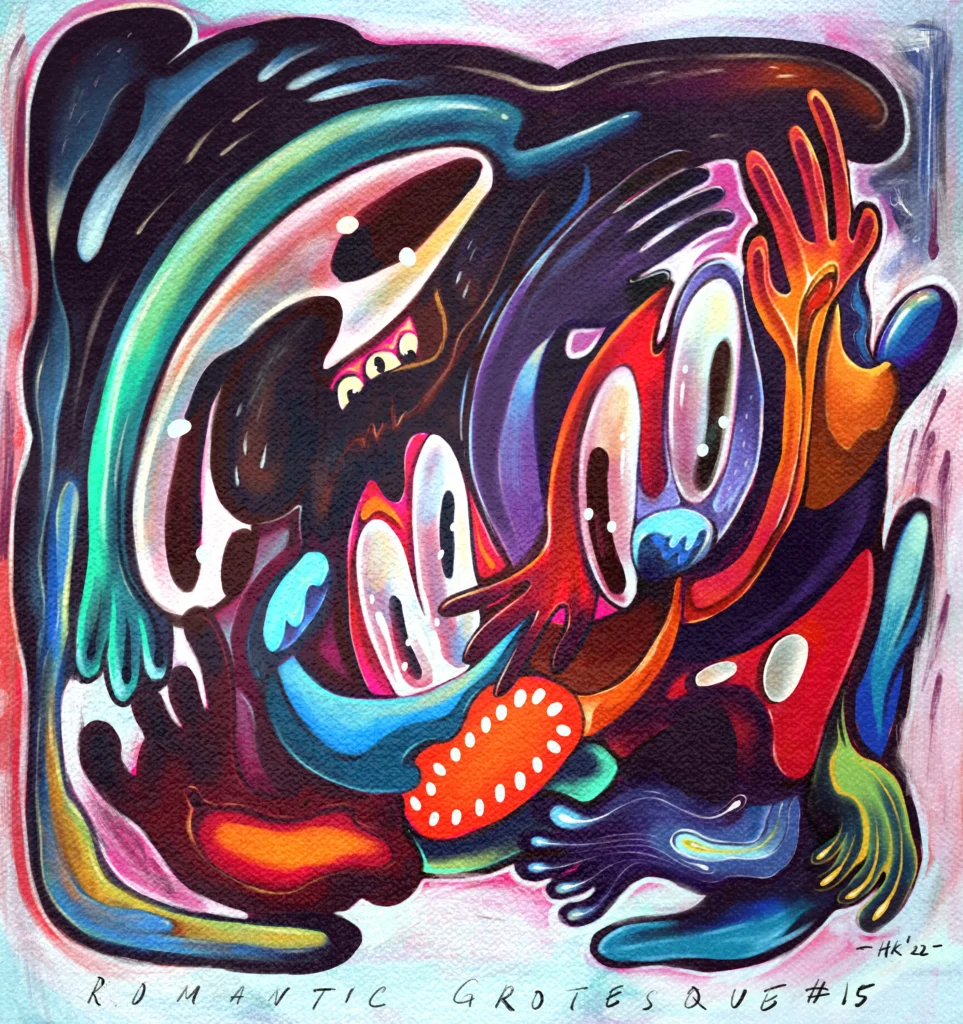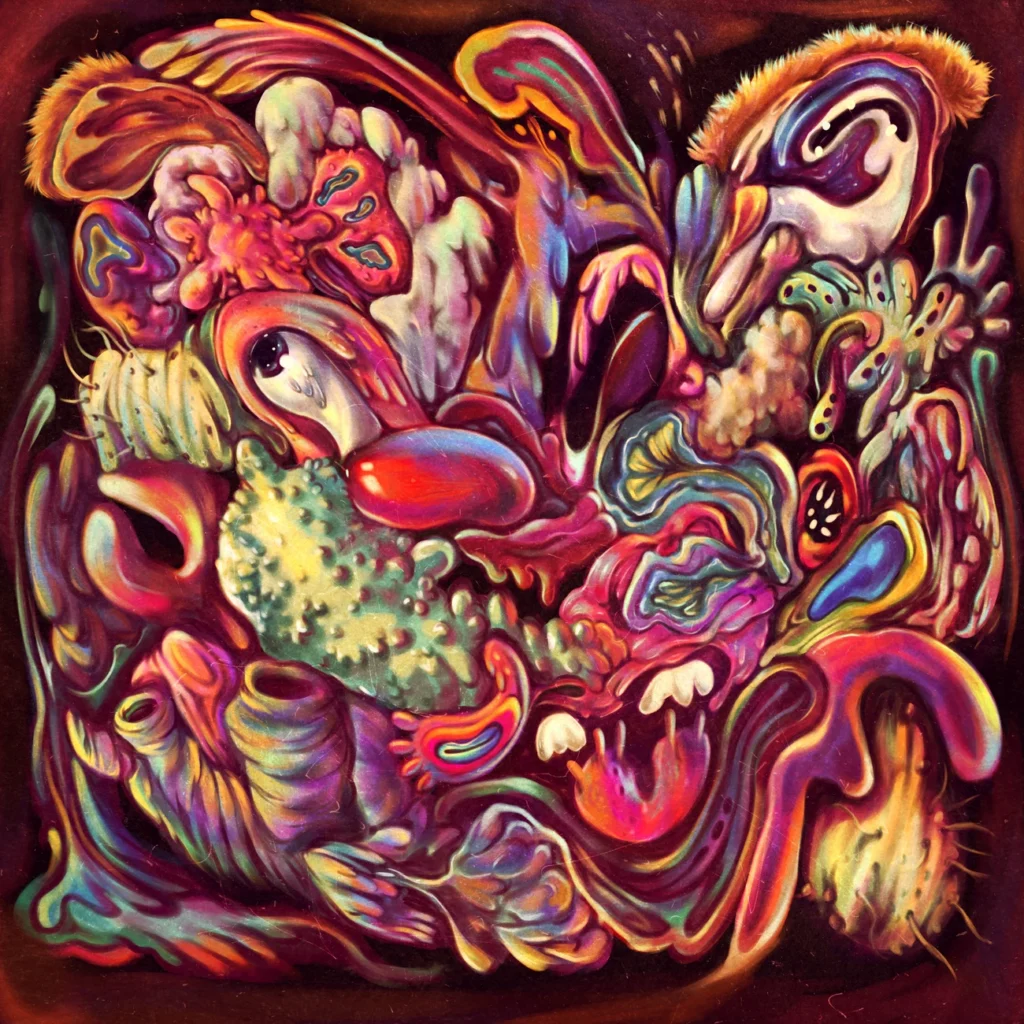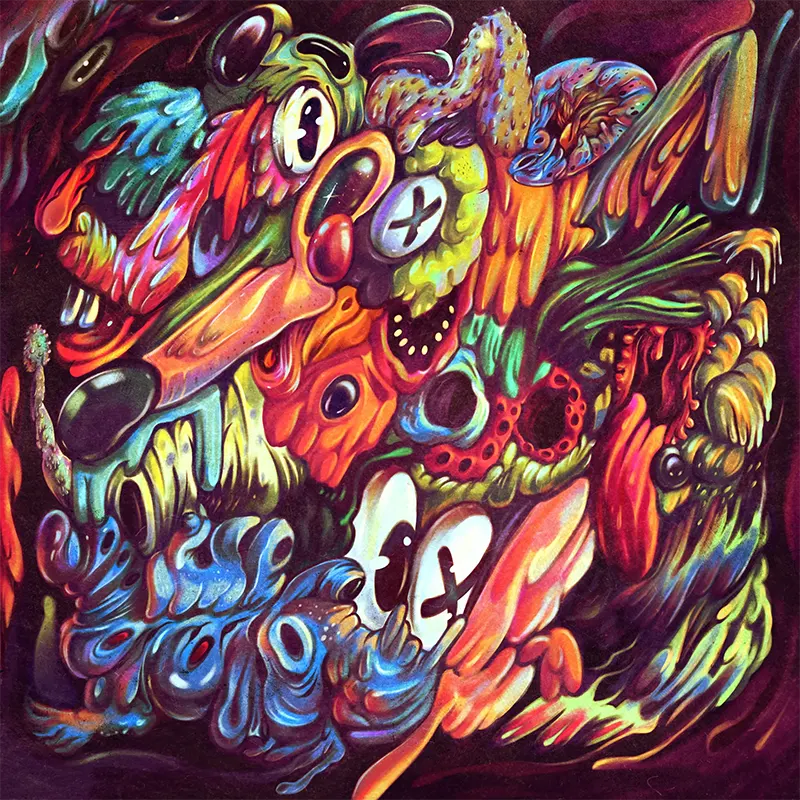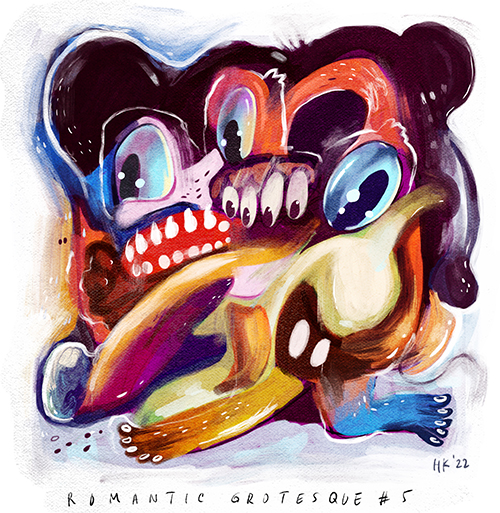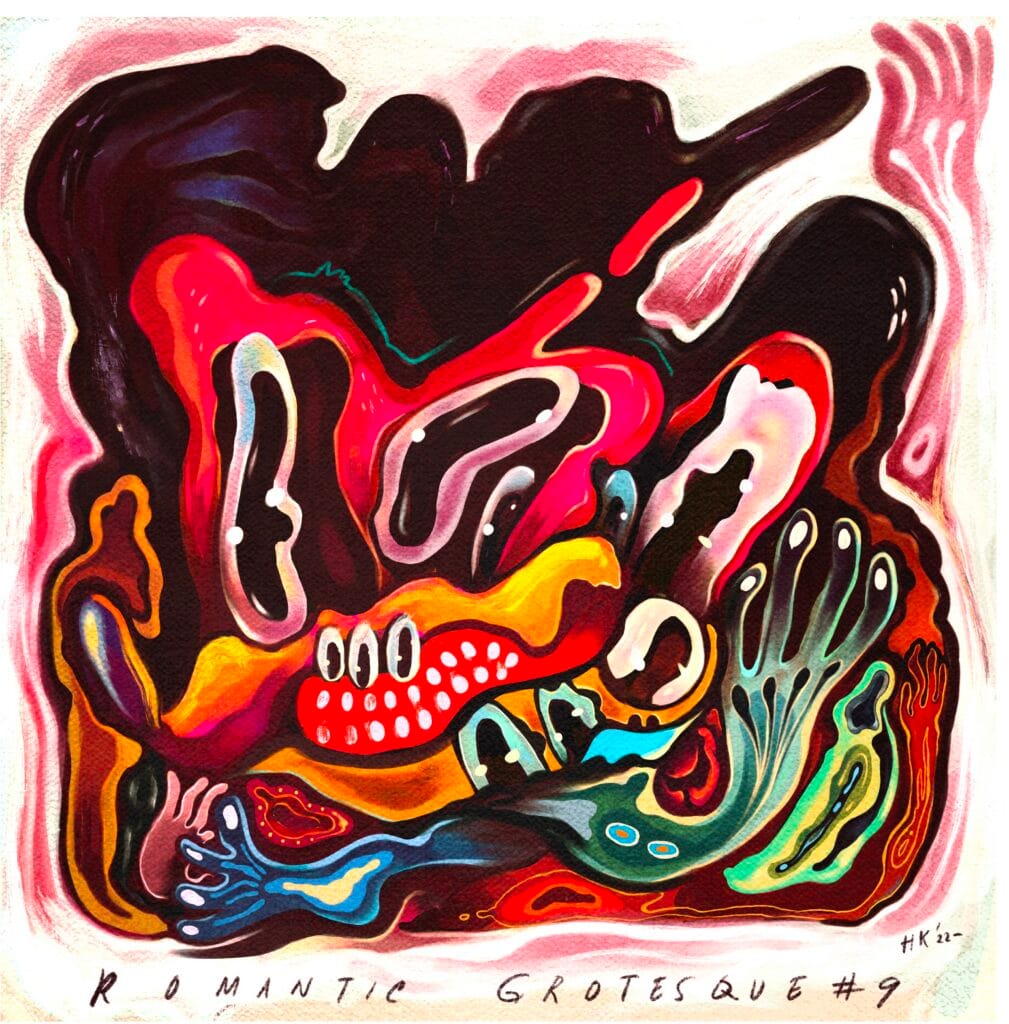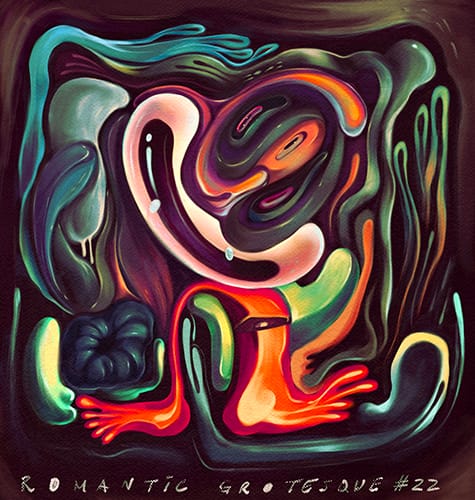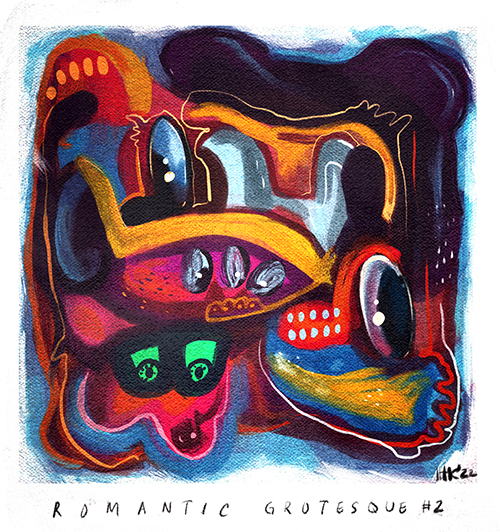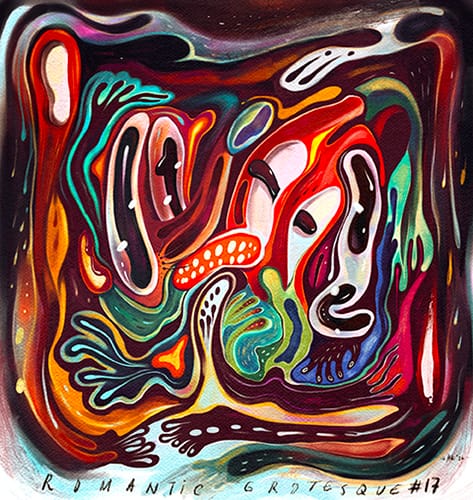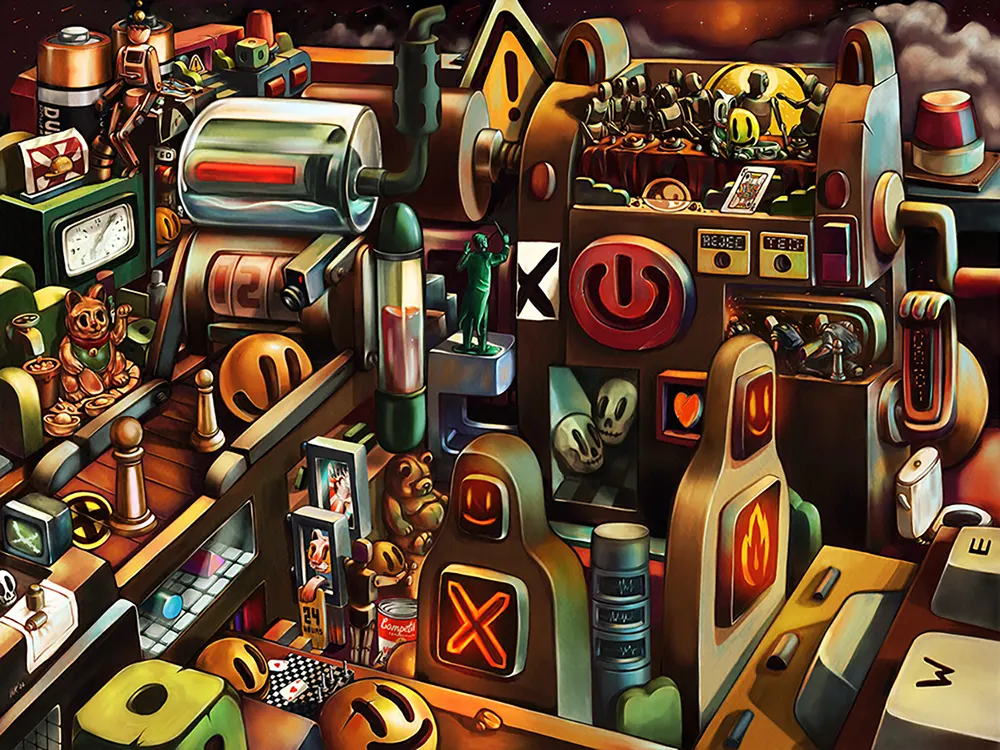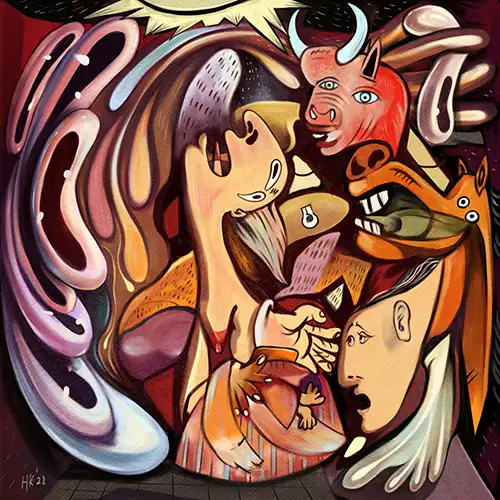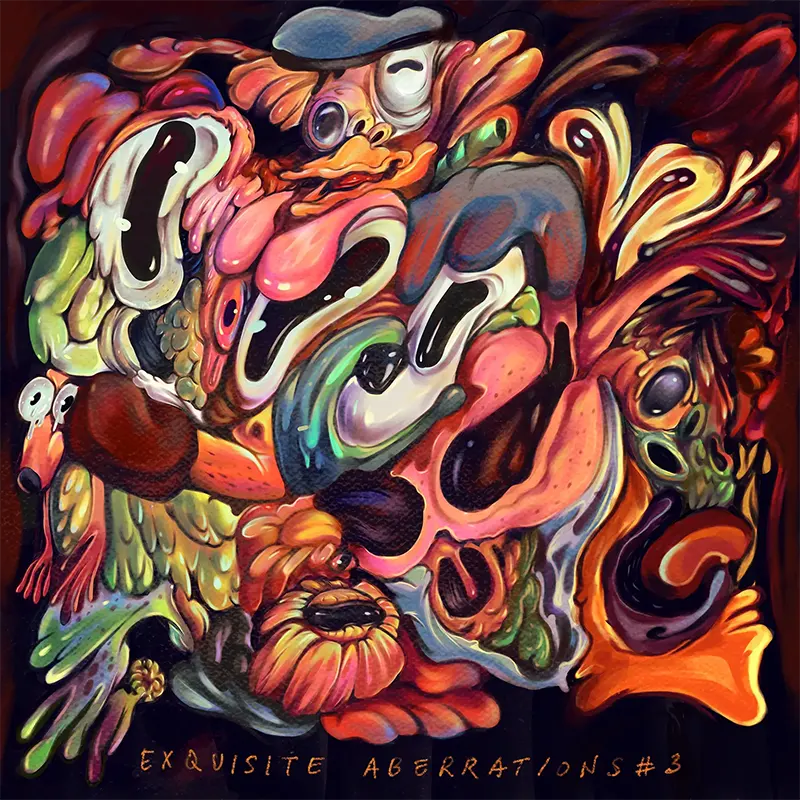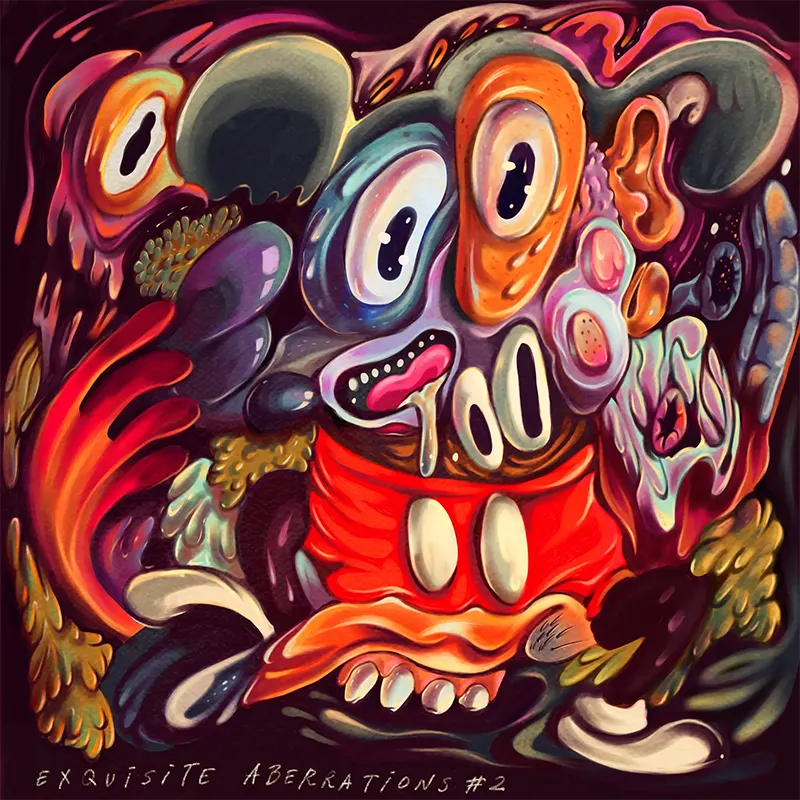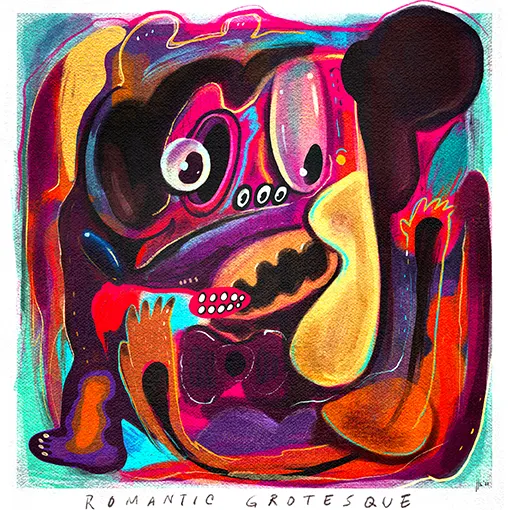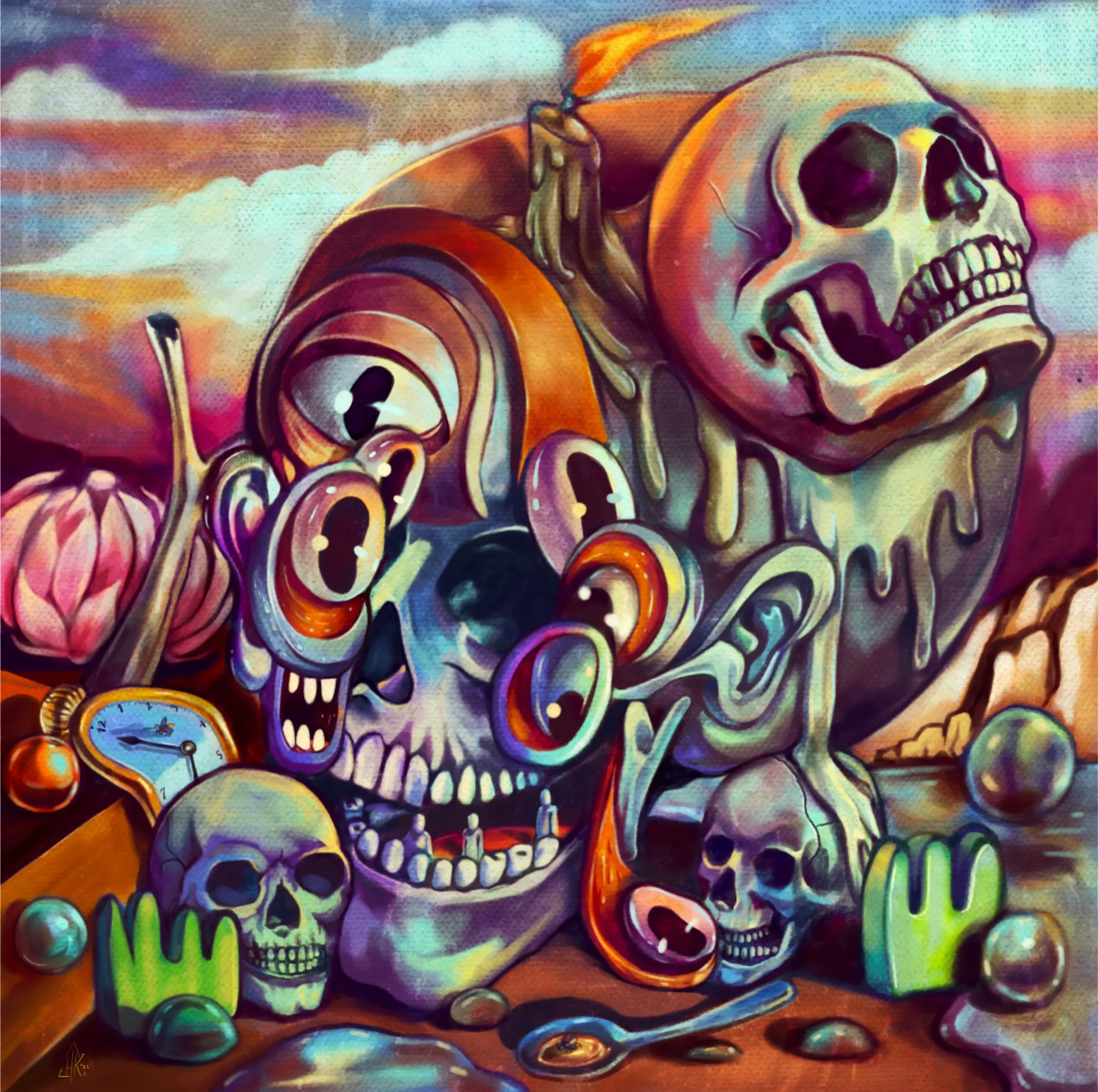
Memento Mori & Carpe Diem in Pop Surrealism: Dark Truths and Beautiful Reflections
NOTES ON MORTALITY, THE ABSURDITY OF LIFE, AND ART AS A SPACE FOR HUMAN REFLECTION
Memento Mori in Pop Surrealism: Lessons of Mortality in the Covid Era
From 2021 to 2023, humanity was caught unprepared by the Covid pandemic. Death became a familiar echo—friends who once stood beside us faded away, one after another. In the shadow of such loss, the brevity of life pressed itself into our thoughts. Movement was confined, love was kept at a distance, and solitude gave rise to contemplation. Questions surfaced: What does it mean to exist? What part does each of us play in this fleeting life? Why must we endure loss, and how do we meet death with understanding? Through these existential questions, I found my expression in Pop Surrealism—a visual language that distorts reality into dreamlike forms, where skulls, clocks, and symbols of time transform into living allegories.
In 2022, I produced the works Memento Mori and Carpe Diem. The existential inquiries of the Covid era immersed me in dialogues—through digital forums with freethinkers and through structured philosophical discussions on Zoom. Central to these explorations was the concept of memento mori, the contemplation of mortality. This notion, far from instilling fear, functions as a philosophical lens: everything we possess—wealth, power, and even the bonds of affection—is impermanent. Ancient philosophers invoked this reminder to temper arrogance, to resist excessive pursuit of material gain, and to orient life toward the divine, acknowledging that ultimately all returns to the earth.
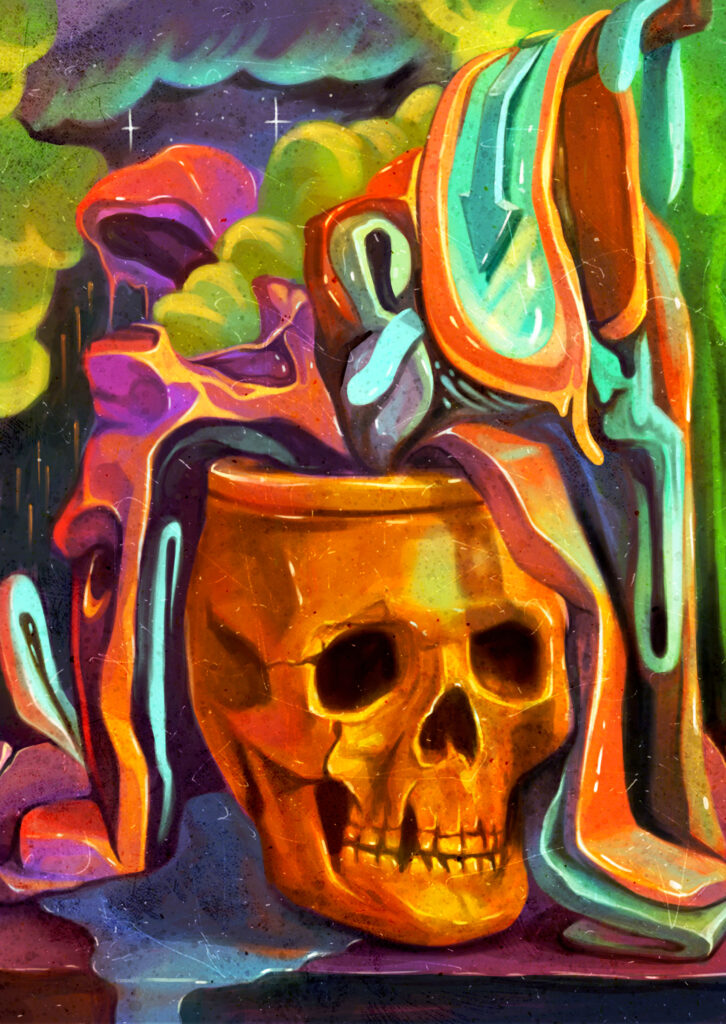
" Vivid Vanitas — a defiant skull that refuses to fade, spilling molten colors of life from within. A reminder that even decay can transform into brilliance, and mortality itself can become art. "
Memento Mori — From Renaissance Harmony to Baroque Shadows
Memento mori is a reminder to treasure, not squander, the time we are given. Renaissance artists, inspired by the ideals of humanism, wove this theme into their works—casting shadows through the motif of skulls. The Baroque period followed with similar imagery. Yet the Renaissance, shaped by humanism, depicted death as transience: a fleeting moment in harmony with nature, guiding the soul toward God.
In the Baroque era, memento mori took on a more emotional tone—one of fleetingness laced with fear. Baroque art, enamored with contrasts, painted skulls in luminous hues against darkened backdrops, or pressed them close to the body. It is as though the canvas itself shouts: death is near, repent at once. Both Renaissance and Baroque returned to the same theme of humanity, though they spoke in different voices. While Renaissance and Baroque painters expressed mortality through vanitas still lifes and dramatic chiaroscuro, my Pop Surrealism approach reframes the same theme in a contemporary way—glitched colors, distorted figures, and surreal objects layered with irony.
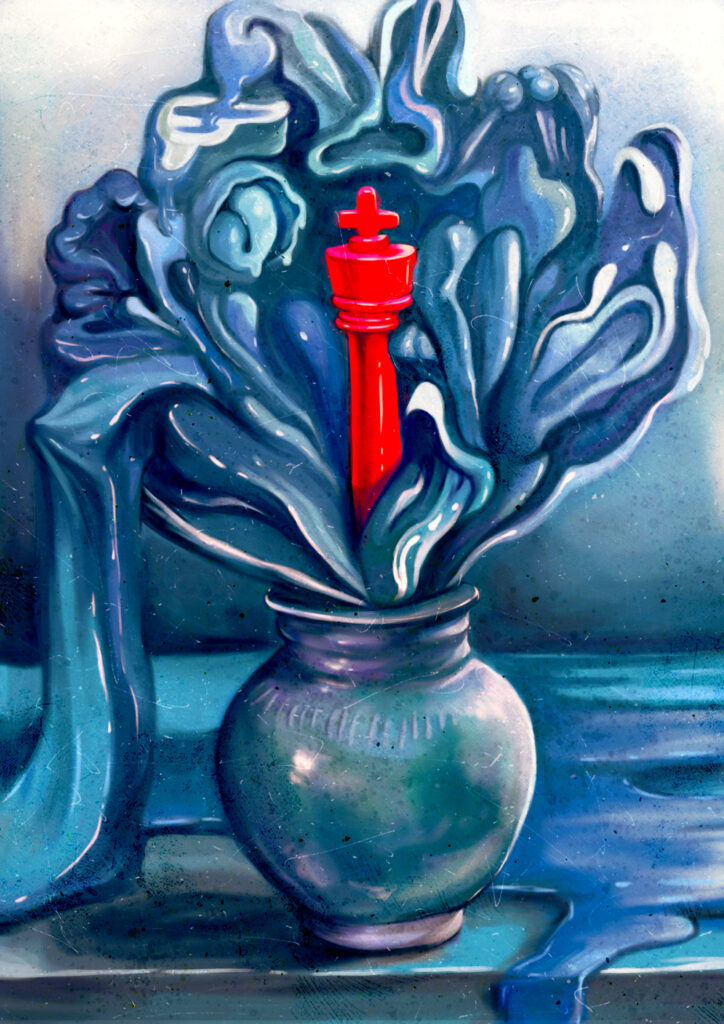
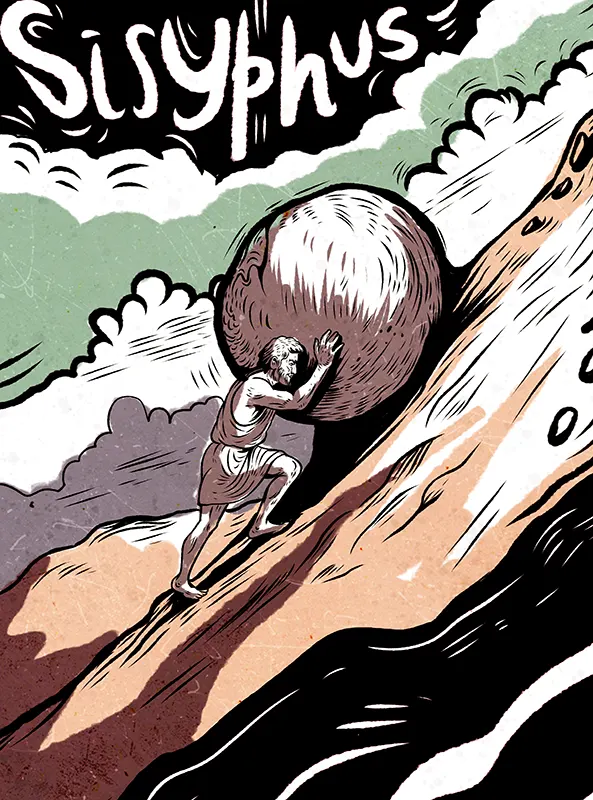
Beyond the Summit: Absurdism, Pop Surrealism, and the Age of AI
Whenever hardship arrives, existential questions return to us like old companions. Yet within our ability to reflect lies the strength to face the absurdity of the world. Albert Camus gave us the image of Sisyphus: condemned to push a boulder to the summit, only for it to tumble back each day. This is our story too. Joys and achievements come and go, leaving us empty once more, urging us to seek again, to begin anew. Life itself is this cycle, endlessly repeating.
And here we stand in 2025, an age where human technology, especially AI, grows powerful enough to replace the very skills we built with years of sacrifice. What once defined us can feel meaningless, as if erased overnight. Tom Nichols calls it The Death of Expertise. Perhaps, then, it is another reset. But like Sisyphus, we may learn not to despair. For the boulder is not merely weight—it is a companion. Each step upward is a celebration, each push a reminder that meaning lies not at the summit, but in the journey itself. In that awareness, Sisyphus is no longer crushed by absurdity, but crowned as its master. This cycle of struggle and renewal appears not only in philosophy, but in my Pop Surrealism paintings, where recurring motifs—a boulder, a crown, or a candle—become visual metaphors for absurdity and resilience.
The Unyielding Flow of Time and the Call to Presence
Following the reflective stage, the discourse transitions to carpe diem—a principle urging the appreciation of the present. Originating from Horace, the ancient Roman poet who rose from slavery to literary prominence, the phrase Carpe diem, quam minimum credula postero instructs: ‘Seize the day, place little trust in tomorrow.’ Conceptually, it aligns with the Eastern notion of mindfulness, encouraging presence in the current moment while resisting excessive concern for an uncertain future
Looking back at this work carries me into memories of a time I would rather forget—yet its echoes remain, the aftershocks of the pandemic still felt today. This piece reflects on human existence itself, on the truth that time never pauses. It moves forward, unyielding, never allowing us to linger.
MY TRADITIONAL WORKS
Memento Mori & Carpe Diem in Pop Surrealism: Lessons on Time, Absurdity, and Meaning
And yet, within that unrelenting flow lies the intimate space of the individual. Here, each of us is free to embody carpe diem. We are the ones who shape the meaning of time, who decide how to live, how to carry the stone. The task is not to extinguish the flame within; even a single ember can ignite small bursts of light each day. That, in itself, is meaning—whether or not it matters to anyone else. In that act, we cease to be victims of absurdity.
So live, and trust tomorrow as little as you can. As long as we walk upon the earth, the future will remain unknowable. Camus reminds us: we must imagine Sisyphus happy. And so must we. Thank you for walking with me through the story of Memento Mori & Carpe Diem.
" We are the ones who shape the meaning of time, who decide how to live, how to carry the stone."
